The Fox Sisters and the Birth of Spiritualism
Catherine and Margaretta Fox were born in New York State’s “burned over” district in the 1830s. [1] They were the youngest of six children, with their oldest sister Anna Leah Fox (known as Leah) born in 1813 or 1814. Three other siblings were born in the 1810s, after which their parents separated for some time due to John Fox (their father) being an alcoholic. In the 1830s he sobered up and reconciled with their mother Margaret. Maggie was born in 1833 and Kate was born in 1837. They lived fairly normal lives at first – mostly raised by their mother Margaret, as their father John was away trying to find work. Leah left home in 1845 and got married aged 14 to a man named Bowman Fish. She had a daughter, named Lizzie, but Bowman abandoned her and she was living in poverty by the end of 1847. The rest of the Fox family moved into a farmhouse in Hydesville in December of that year – one which Mrs Fox soon became convinced was haunted.
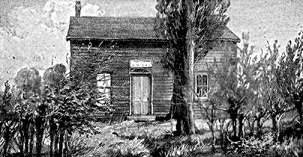
There was a rumour in town that a peddler had been murdered on the site of the farmhouse, at some indeterminate time in the past. Mrs Fox heard the story, and soon began jumping at every noise in the house – from banging doors to creaking timbers. Eventually the two Fox sisters began using this to play pranks on her. They discovered that an apple falling to the floor made a hollow knocking sound that drove their mother into a panic, and they also realised that she had no conception that her innocent girls could be playing tricks on her. It was all good, if cruel, fun – simple teenage pranks. Until the night of March 31st when everything changed.
Mrs Fox had grown so panicked that she decided to have the children sleep in their parents room. At this point she was seriously sleep deprived, and the children don’t seem to have realised what sort of state they had put her into. As they lay there, there came a strange sharp noise – as of someone rapping on wood. Kate and Maggie then started talking to the source of the noises – calling it “Mr Splitfoot”, and getting it to mimic their claps with knocks. Their mother began asking it questions, and the source replied. Using “two knocks for yes, one knock for no” she determined it was the spirit of a man murdered in the house. Then she asked it if it would continue to perform if she brought in outsiders. The spirit answered yes.
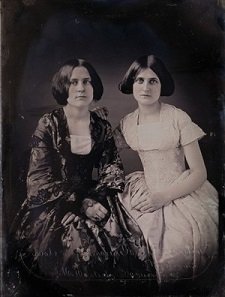
Of course, there was no spirit. As the girls would confess forty years later, they were making the noise by cracking the knuckles in their toes. Kate even tried to half-confess this to her mother, by pointing out that the next day was April Fool’s Day, and that this must be a prank. But Mrs Fox was too convinced, and neither sister could tell the other to stop. The whole thing had escalated too far, and it was about to go completely beyond their control.
The first neighbours called in thought the matter a joke, and ironically it was the panicked faces of the children that convinced them otherwise. They asked their questions, and got their answers in response. One asked more questions about the spirit’s murder, and was told that the killer had since died and so no justice could be gained. The spirit told them it was buried in the cellar, and they took it so seriously that on Saturday they began digging it up. No body was found.
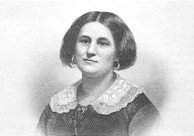
For the next few days, the house filled with curiosity seekers, and the sisters soon became a nine-days wonder. With this attention came skepticism. Some locals called them tricksters, but others began to mutter darkly about witchcraft. The local Episcopal minister asked them to leave the congregation. The Fox parents decided that the best thing to do was to send the sisters away, and so they were sent off to stay with relatives. Maggie went to stay with her brother David, and Kate went to stay with Leah. Leah soon persuaded the young Kate to tell her the truth about what the sisters had been up to, and she soon began making plans to take everything to an even greater level.
At the time Rochester was a hotbed of free-thinking. In 1847 Frederick Douglass founded an abolitionist newspaper in the town, while in 1848 a Women’s Rights Convention was held in the town. It would prove one of the early sparks that ignited the American female suffrage movement. The town was also home to many religious free thinkers – radical Quakers and Swedenborgians among them. The previous year the mystic Andrew Jackson Davis had written a book based on Swedenborg’s writings claiming that the dead were always with the living, and that soon open communication would be possible. That was exactly what Leah Fox intended to give them.
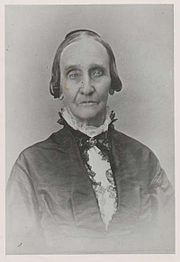
The seed was planted with Isaac and Amy Post, two Quaker friends of Leah’s who took in her two sisters when the impoverished Leah could not care for them herself. The Posts had lost several children to illness, and so when Leah suggested the two girls try to contact their spirits, the older couple agreed. They were sceptical at first, but soon became zealous converts. The Posts were involved in both the abolitionist and suffrage movements, and when they were convinced of the girls’ talents they started telling their friends. Soon the requests for seances came flooding in. The Posts, and their friends, were the seed of what became the “Spiritualist” movement, a quasi-religion based on a belief in the persistence of the human soul and the ability to communicate with it after death. Leah herself tried to convince her sisters that the spirits were real, and that they were acting through them. Kate accepted this, but Maggie still worried that what they were doing was wrong. This worry only became worse when Leah announced that the spritis wanted them to bring their message to the general public. For a price.
The first public demonstration by Maggie Fox [2] took place at the Corinthian Hall in Rochester on the 14th November 1849, paid admission only. The audience, it has to be said, were less than sympathetic. Most expected to be present for the unmasking of the girls as frauds, a fun bit of public shaming. Representatives of local churches, who saw the whole thing as fraudulent at best and heretical at worst, were in attendance. Disappointingly for the audience, though, the girls performed their roles flawlessly. On the second night, at the insistence of a local newspaper, a committee of Rochester’s grandees were on stage to examine proceedings. When they failed to detect any fraud, the crowd only grew more incensed. On the final night, the 17th, the stagehands even discovered that somebody had smuggled in a barrel of warm tar – presumably for the traditional tarring and feathering. When the committee member admitted they could not explain the sounds it set off a riot – fireworks were thrown, and the girls had to be smuggled out the back of the theatre.
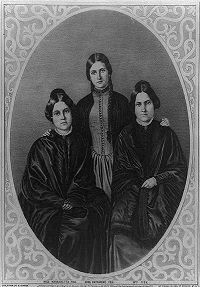
You would be forgiven for thinking that the events at the Corinthian were a disaster. You’d be wrong. In the world of show business there’s no such thing as bad publicity, and the frenzied local coverage, picked up by the New York dailies, made the girls stars. In 1850 the girls went on tour through upper New York stater before they sailed down to the city. There the local literary set were all determined to see the girls in person. In the smaller surroundings, with the appropriate atmosphere, their seances were far more convincing than they had been in the Corinthian. Even those journalists who attended were convinced, and some of the papers which had been denouncing the girls as frauds published retractions. [2] Even Andrew Jackson Davis, the mystic who had “predicted” the sisters, gave them his seal of approval. In September they left New York, now considered credible and respectable.
Things looked good for the sisters, at least on the outside. Of course, not everyone was entirely convinced by their act. In fact, several people even realised that the “rapping” was caused by them cracking their toes. A physician, several priests, and three university professors all had articles published in newspapers putting this explanation forward, but all were ignored. Spiritualism was a phenomenon now. Mediums started coming out of the woodwork everywhere, and seances became fashionable and popular. Many of these new mediums were more showy than the sisters – “trance” mediums who would channel spirits and produce ectoplasm and all kinds of showy effects. Still, the sisters (as the “original” mediums) remained key figures to the Spiritualist movement.
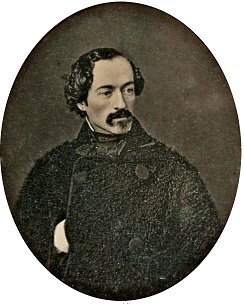
Leah remained in New York, where she remarried to a man named Calvin Brown in 1851. He died in 1853. Kate and Maggie toured the country, and in 1852 among the audience at a show in Philadelphia was a young doctor and Arctic explorer named Elisha Kane. He had just returned from his first Arctic expedition, and when he heard of the sisters he was convinced they were frauds. He went to every one of their dates in Philadelphia to try and see what the trick was. He never figured it out, but he did figure out that he found Margaret very attractive. Somehow he wangled an introduction to her, and the two began a somewhat fraught courtship. The Spiritualists didn’t want one of their star mediums marrying an unbeliever, while his rich Roman Catholic family didn’t want him involved with this heresy. In 1853 he set out on his second expedition, one which ended in 1855 with a ship locked in ice and an 83 day march across the snow to safety. The experience wrecked his health and he returned to New York a broken man. There he and Maggie were secretly married and he published a book about his exploration. In 1857, while on a trip to Havana to try to recover his health, he died. In accordance with his wishes Maggie had converted to Catholicism, but when his family refused to recognise the marriage and left her without any means of support she was forced to return to the Spiritualists. Small wonder she developed a drinking problem.
Kate had been left to be brought up by Horace Greeley, founder and editor of the New York Tribune and a devout Spiritualist. She attended a private school in New York, but her home life was far from happy. Greeley’s wife was mentally ill – broken by grief over a dead son (whose death was also what had made Greeley open to spiritualism). Once Kate was finally old enough to get out of the house, she went back on the stage as a medium. Her act had developed from the simple rapping to the full production of the typical stage medium of the day – manifestations of spirits and the channelling of the dead. Kate was especially notable for her ability to receive one message through “automatic writing” while simultaneously giving voice to another. She was a true “celebrity medium”, and she took advantage of her celebrity status – developing, like her sister, something of a drinking problem. In fact, some of Elisha’s letters to Maggie while he was on his expedition warn her to watch out for her sister’s drinking. Kate would had only been a teenager at the time.
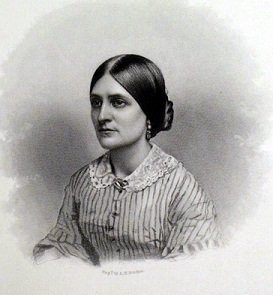
Leah married a wealthy banker named Daniel Underhill in 1857. Daniel was a Spiritualist, and the pair of them soon had a solid control over the new movement. In 1864 she found out quite how serious her sisters’ drinking problems were, and arranged for them to go into rehab. However their father’s death in early 1865 and their mother’s death later in the year disrupted these plans. Kate did go through the process, but Maggie never did. She gave up on getting Elisha’s family to recognise their marriage and published his letters to her as The Love Life of Doctor Kane. This book flopped, and she was forced to accept Leah’s offer to go back on the stage as a medium in order to support herself.
In 1871 Kate went to England, officially as a missionary of the “church of Spiritualism”. She was 34, and doubtless saw this as a way to escape Leah’s tight control. In fact, Leah had engineered the trip as a way to separate Kate from Maggie in order to avoid her relapsing into alcoholism. There she met and married a London solicitor named Henry Jencken. He was a barrister and a spiritualist, and the two had a happy marriage. They had two children, both boys. Some accounts have it that the pair moved back to New York in 1875, while other accounts say that Maggie came out to London to visit them in 1876. (It may be that the 1875 trip was just a passing visit – it’s unlikely that a barrister trained in English law would have wanted to move to America where it would have been hard to find work.) However it’s definitely true that in 1881 Kate’s domestic bliss came to an end when her husband died.
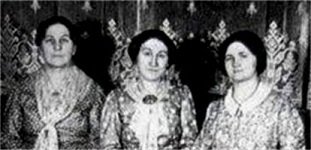
Kate was back in New York in 1885 when Leah published The Missing Link in Spiritualism, a revisionist history of the Fox sisters and their mediumship. The pressure was on to keep Maggie and Kate in line, and when she found out that Kate had started drinking again she began making moves to take her children away from her. It was this that prompted Kate and Maggie to band together and decide to expose the fraud they had perpetuated since they were children. At the New York Academy of Music on October 21st 1888 Maggie sat on stage and described, then demonstrated, how she and her sister had created the famous “raps”. She denounced Leah as having been in on the fraud from almost the beginning, then thanked God that she had this opportunity to expose the fraud.
“I regard Spiritualism as one of the greatest curses that the world has ever known.”
– Katie Fox Jencken
The papers declared the demonstration “a death blow to Spiritualism”, but ironically the movement proved impossible to lay to rest. Instead it cracked. One faction declared the sisters entirely motivated by spite against Leah in making false confessions. The other, in a classic defensive move used by mediums down the years, said that the sisters were genuine mediums who were being directed by the spirits in their imposture. The real issue, of course, was Leah’s control over the movement and the politics around that with Maggie and Kate used as a pretext. In 1890 Leah, in her late seventies, passed away. The year before she had managed to pressure Maggie into recanting her confession, but she was never able to drag Kate back into the fold. Sadly Kate herself died in 1892 of kidney disease, and Maggie died the following year of a heart attack. Maggie was a pauper at the time of her death, but thanks to donations from friends she was buried next to her sister in Cypress Hill in Brooklyn.
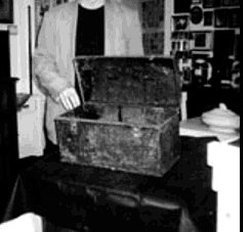
Various descendants of the Spiritualist movement remain active to this day, and more than a few people still insist that the Foxes were genuine mediums. There was also one slightly odd coda to the whole affair. Though the people who excavated the Fox family homes cellar in 1848 never found the body of “Mr Splitfoot”, children playing in the cellar of the (by then abandoned) house found a collection of bones. The papers were hugely excited by this, with the Boston Journal giving an entire account of the “skeleton” being found behind a false wall. Sadly for true believers, an analysis of the bones by a physician in 1909 proved them to be a mismatched collection that was a mixture of chicken and human, with the latter probably scavenged from a nearby graveyard. Some local prankster, was the general conclusion that was reached. A final fraud to put a capper on our story. It’s strange how some people can want to believe a lie so much that even when the liar admits it, they still believe.
Images via wikimedia or The Paranormal Guide except where stated.
[1] The “burned over” district gets its name from a quote by the preacher Charles G Finney in 1876. The area was the ground zero for the Church of Latter Day Saints, the Jehovah’s Witnesses and the Seventh Day Adventists (as well as the Spiritualist movement, of course). By 1876 Finney said that there was no point in preaching there any more because “there was no fuel left to burn”.
[2] Leah was away, perhaps considered too young for the stress of going on stage.
[3] There’s a story that PT Barnum had the girls perform at his Museum in New York. However this was not the case. The confusion appears to come from the girls staying at a Barnum’s Hotel at one point. The Barnum who ran it may have been a cousin of the famous showman.
